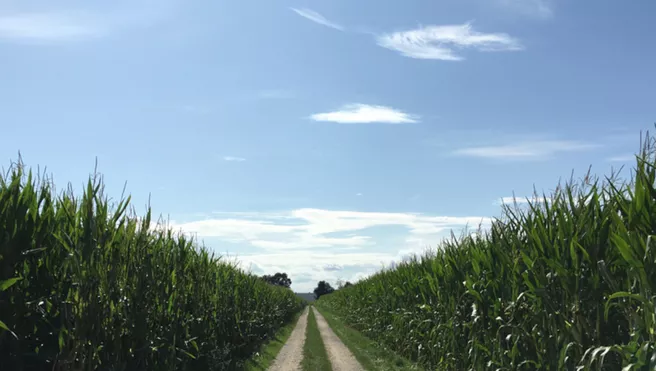Many scientific future scenarios that take into account the temperature targets of the Paris Global Climate Agreement include a striking element; in 2100, at least six million square kilometers ( an area 17 times the size of Germany ) will be covered with climate plantations, where fast-growing plants pull CO2 from the atmosphere and are burned in bioenergy plants thereby capturing and storing the greenhouse gas in the process. “Bioenergy with Carbon Capture and Storage” is the technical term.
But, a team of authors led by the Berlin-based Mercator Research Institute on Global Commons and Climate Change (MCC) including Dr. Christian Hof, head of a junior research group in the department of Terrestrial Ecology at the TUM School of Life Sciences warns that this scale is unrealistic and misleading.
Do not increase acreage of bioenergy crops
“Such calculations help science understand interrelationships - but policymakers and the public should not construe them as somehow desirable,” says Professor Felix Creutzig, head of the MCC’s Land Use, Infrastructure and Transportation Working Group and lead author of the paper.“Under current circumstances, the area devoted to bioenergy crops, about 500,000 square kilometers worldwide, should not be increased at all!”
Biodiversity could be at risk
To make the case that additional climate plantations would not actually make the world more sustainable, the researchers evaluated various repots from the Intergovernmental Panel on Climate Change (IPCC) and other scientific studies.
They have concluded that in particular scaling up “Bioenergy with Carbon Capture and Storage” would endanger biodiversity. Such so called climate protection measures would possibly be worse for nature than taking no action at all, the team author warns. He points out that the number of mammals, amphibians, reptiles, and fish worldwide already declined by 68 percent from 1970 to 2016.
“Our studies clearly show that a massive expansion of the cultivation of bioenergy crops would contract positive effects of climate protection for biodiversity,” says Dr Christian Hof, who with his team is particularly concerned with how land use changes affect climate and biodiversity. According to the scientists, the risks to biodiversity as well as the risks to the livelihoods of indigenous peoples should be given greater weight in the IPCC.
In the scenario models, too little attention is paid to the problem of tipping points - i.e. if we continue to rely on large-scale CO2 removal in the second half of the century, rising temperatures will cause captured methane to escape from thawing permafrost in Siberia, for example, and exacerbate the climate crisis.
Emissions reduction is especially important
“The fact that the bioenergy method does not in fact have great potential should not lead to pessimism in terms of climate protection though,” emphasizes Felix Creutzig. “After all, there are also much less land-intensive forms of CO2 extraction such as direct extraction with air filter systems.”
Christian Hof adds, “the most important thing now is to reduce emission, which could be accomplished by decarbonisation of the economy, reducing energy consumption wherever possible, and providing incentives for climate-friendly behavioral changes such as changing peoples eating habits. The climate and biodiversity crises are arguably the greatest challenges of our timed they are interconnected. We need comprehensive solutions that address them both.”
Publikation:
Creutzig, F., Erb, K., Haberl, H., Hof, C., Hunsberger, C., Roe, S., 2021, Considering sustainability thresholds for BECCS in IPCC and biodiversity assessments, Global Change Biology Bioenergy
Editing:
Dr. Katharina Baumeister
TUM Corporate Communication Center
Press and Public Relations
Scientific Contact:
Dr. Christian Hof
TUM School of Life Sciences
Chair for Terrestrial Ecology
Phone: +49 8161.71.2489
christian.hof(at)tum.de

